There’s no wrong way to eat sushi.
Whether you like it raw, sashimi-style, flash-fried as part of a sushi roll, or chopped up in a Poke-style sushi bowl, eating raw fish is no longer frowned upon in the US – and just about everyone has tried sushi at some point.
Whether you pair it with a glass of sake, a cocktail, a glass of wine, or any other beverage, sushi offers a unique and flavorful eating experience that’s unlike anything else. The cold, firm fish combined with rice, sauce, and other ingredients is truly one-of-a-kind and delicious.
Sushi has quickly become one of the most popular international dishes over the last century or so, and it’s easy to find a sushi restaurant anywhere in the world – especially in the United States, where there are over 4,000 sushi restaurants. But how did this delicious dish get its start, and become so popular in America? Was the idea of eating raw fish always accepted among the populace? Who is responsible for the popularity of sushi?
Get the answers to all of these questions – and more – by reading this article. We’ll give you a brief history of sushi around the world and in the US, and discuss why it’s so popular today. Grab a glass of sake and a piece of sashimi – and read on to get all of the details.
What is the origin of sushi?
Sushi is said to have originated from Southeast Asia’s narezushi. Narezushi is a fermented food that is characterized by the fact that the rice grains are thoroughly fermented until they become mushy. At that time, the tribes who lived in mountainous areas devised a way to preserve fish that was difficult to obtain for a long period of time. In order to preserve freshwater fish, rice and other grains were cooked and the fish was pickled together, and the fish was preserved by fermenting the rice.
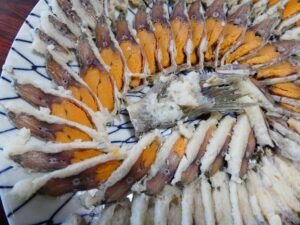
Japanese sushi history
So how did Japanese sushi come to be what it is today? Let’s unravel its history.
The aforementioned narezushi is said to have been introduced to Japan around the Nara period. It is made by soaking freshwater fish such as sweetfish and crucian carp on rice that has been seasoned with sweet vinegar overnight, and was eaten as a preserved food. It is also known that these were presented to the imperial court as tributes and were the food of the nobility.
For many centuries in Japan, fish was preserved by fermenting it in rice which was later discarded. This fermented sushi could take years to make, and there were two styles. One was kirimi sushi (sliced-fish sushi), in which the fish was cut into pieces, mixed with rice, and fermented. The other one was sugata sushi (fish-shaped sushi), in which the entire fish was fermented in rice.
Later, in the mid-Edo period, vinegared rice was introduced and fermented sushi evolved into haya sushi (fast sushi). Haya sushi did not take nearly as long to make, and the vinegared rice was eaten along with the fish. With the introduction of haya sushi, kirimi sushi branched off into Hako Sushi (boxed sushi) and chirashi sushi (scattered sushi), while sugata sushi branched off into maki sushi (rolled sushi) and Inari sushi. All these varieties are available and still eaten today.



It is said that it wasn’t until the end of the Edo period that people began to eat nigiri sushi as it is today. At a food stall that was popular in Edo, “nigiri sushi,” which can be eaten as soon as you make it, was born. It came to be called “Edomae sushi” because it used seafood and seaweed caught in Edomae (Tokyo Bay).
In those days, nigiri sushi was about the size of a rice ball, so it was cut into pieces and eaten. The style of serving two pieces of sushi on one plate is also a remnant of the time when sushi was cut into pieces and eaten. As will be described later, until the Taisho era, when the variety of toppings increased and the size of sushi became smaller, each piece of sushi was slightly larger than the size of sushi we imagine today. It seems that it was the size of
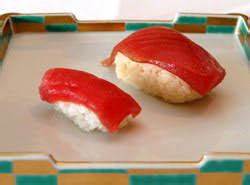
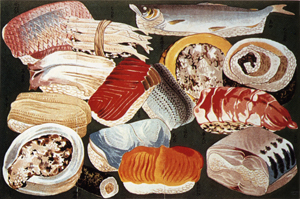
Since 1897, when the ice-making industry has flourished, along with the development of fishing methods and distribution, sushi restaurants, which were previously unable to handle raw sashimi, are now able to freeze and preserve toppings with ice. It is a style that was established during this period, which is common in modern times.
Based on tradition, Tamon and Bishamon, our group restaurant, serve all tastes with all our heart, whether you are adventurous or a sushi beginner who has doubts about eating raw fish.
Please check the page of each store for details of menus and offerings.
Bishamon Nigirisushi
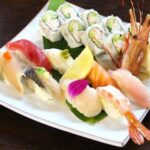 Bishamon Chirashizushi
Bishamon Chirashizushi
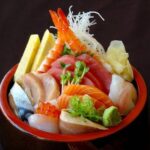 Tamon Nigirisushi
Tamon Nigirisushi
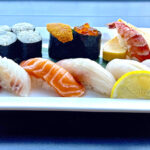 Tamon Chirashizushi
Tamon Chirashizushi
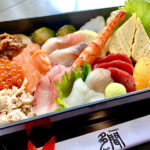
https://group.bishamon-ten.com/bishamon_restaurant/